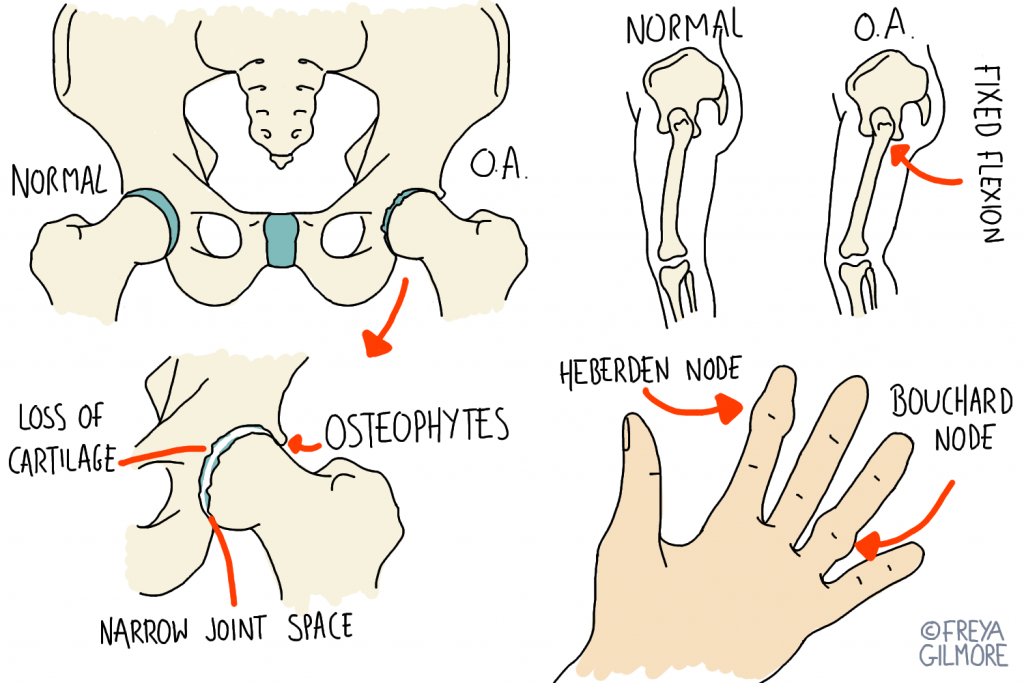The IT band is a band of tissue that runs down the side of the…

Osteoarthritis in the Hip and Knee
Osteoarthritis can be considered normal “wear, tear, and repair” within joints. But that is not to say that you have to put up with it, or wait for a joint replacement.
Arthritis often affects the hips and knees. The process is the same in these joints as it is anywhere else.
- Joint movement becomes limited, sometimes due to pain
- Cartilage in the joint becomes less healthy, as it relies on the compression and decompression of normal movement for nutrition
- The joint becomes more uncomfortable, and movement is limited further
The good news is that as long as you can improve movement, you can slow the progress of osteoarthritis. In some cases it may even be possible to heal the cartilage to some degree.
Significance of hip and knee osteoarthritis
Making changes to the function of the hip and knee will have an effect on gait. If the body adapts well, you may not notice the change until you catch sight of yourself in a window or someone points out how you are walking. Unfortunately, the body’s definition of “adapting well” is about avoiding immediate pain- not necessarily working efficiently or resolving the problem.
Hip osteoarthritis and “walking like an old person”
If you’ve ever wondered how someone develops that “elderly” posture, the answer might be hip arthritis. This is how the hip can influence the rest of the body:
- The hip loses extension and no longer wants to move back beyond neutral
- The body compensates by holding the hip forward. The curve of the lower back flattens.
- The neck has to extend to avoid looking at the floor and restore some balance.
- Hip extension is not used, so the cartilage continues to degrade.
Postural changes due to knee osteoarthritis
Knee arthritis can play into postural changes as well. If the arthritis is in the joint between the knee cap and the rest of the knee, it will be affected by the tension of the quadriceps. If the quads are tight, they will pull on the knee cap and cause increased pressure on the arthritic joint. The obvious solution would be for the body to relax off the quads, but we don’t tend to relax when we are in pain. Instead, the body might flex the hip (as before) to get some slack in the muscle. The cycle described above happens again.
Does Osteopathy help?
Research shows that hip and knee arthritis respond well to manual therapy and exercise. It is important to combine both treatment and exercise in order to keep on top of arthritis. Osteopathy sessions can help in giving you the confidence to move further, as often movements are less painful when done for you. Daily exercises are necessary to keep that benefit and push the movement further still.
Many patients with osteoarthritis find that intermittent treatments keep their symptoms under control. For some this means coming in as infrequently as once every six weeks after a more frequent treatment plan to get to a comfortable point. Of course, the less advanced your arthritis, the less work there is to do. It’s never too early to get it checked out.
Do you have the early signs of arthritis, or have you noticed a change in the way you walk? Book an appointment and see what we can do for you.





